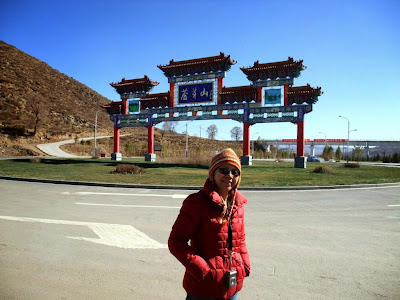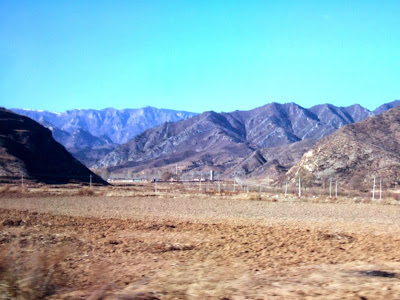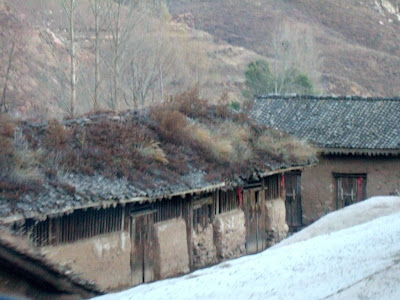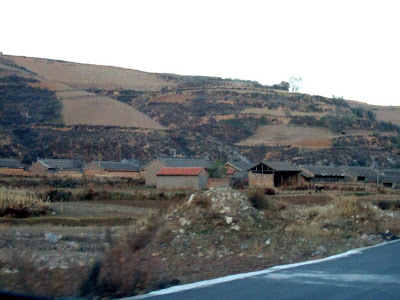
Luya-shan lying at north west side of Shanxi Province, is a national Reserved Natural Park of China. It had been a notable summer resort and place of relaxation since 1500 years ago and never failed to attract travelers of all levels to enjoy its scenic sights and remarkable landscape as at this 21st century.



The mountain was named after its shape that appears like an asparagus shoot from far. Luya literally means asparagus shoot.



It looked like the road was cleared for two of us !


Picturesque sight of mountain ranges and unique rock formation along the way to Luya-shan.








Living quarters are scattered around the mountain slopes and at the foot of the ranges.



There are more than 10 villages at the foot of mountain Luya-shan and its surroundings.


The serene villages are disconnected from the bustling and polluted world.



The modern white house was rather outstanding among other primitive houses.



A serene and beautiful sight of a primitive village that settled against the mountain ranges!





Typical rural scene where agricultural is the main activity.







A contented and simple life for the mostly hardworking inhabitants.





A local former, he looks manly and tough!



Wheat after harvested were spread over the whole road for the passing-by vehicles to grind over it so that it could be separated out from the stalk easily.


The farmers most of the time have to separate the wheat from stalks by beating it manually with a hand-made tool, as hardly there are vehicles passing by to grind over the crops, and make their job easy.




Experience how a farmer separate the harvested wheat from its stalk.




Its a simple tool but it works.



A fantastic scene of cooperation in harmony! A horse, a donkey and an ox led by their master, were ploughing the fields together.


Farms and animals are the greatest assets to most villagers.




Similar to New Zealand, most of the mountain slopes were occupied by hundreds and hundreds of sheep.



Keeping cattle and rearing sheep are part of the farmers livelihood as the weather, the landscape and grass grown have created the best condition for breeding livestock.








No comments:
Post a Comment